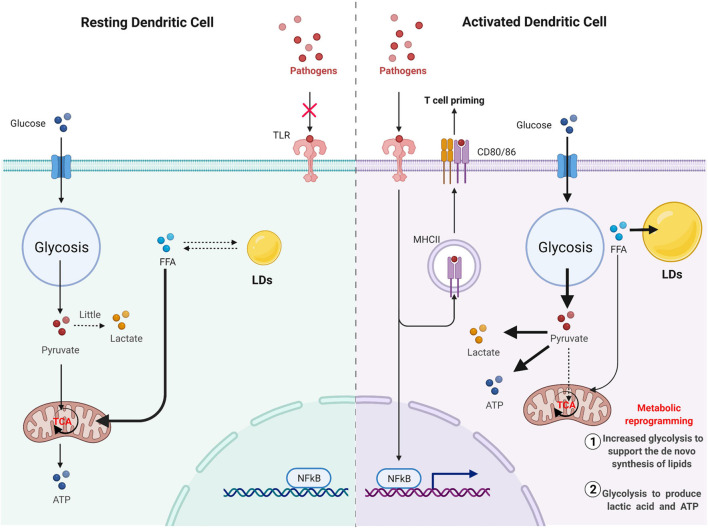FIGURE 5.
Pathogen invasion is often accompanied by the accumulation of LD. Resting DC mainly uses free fatty acids as substrates for oxidative phosphorylation through fatty acid oxidation to generate energy to meet physiological needs. Glucose can also be used as a substrate to produce energy in resting DC, mainly because glucose can be converted to pyruvate by glycolysis, and then enter the mitochondrial TCA cycle. However, when DC cells are activated, pyruvate produced by glycolysis will no longer enter TCA and will be converted to lactic acid capacity under a harsh environment such as hypoxia. DC activation mediated by TLR will eventually lead to the accumulation of LD, mainly due to metabolic reprogramming. This metabolic change process can be divided into the first stage of increased glycolysis to support the de novo synthesis of lipids and the second stage of glycolysis to produce lactic acid and ATP.

